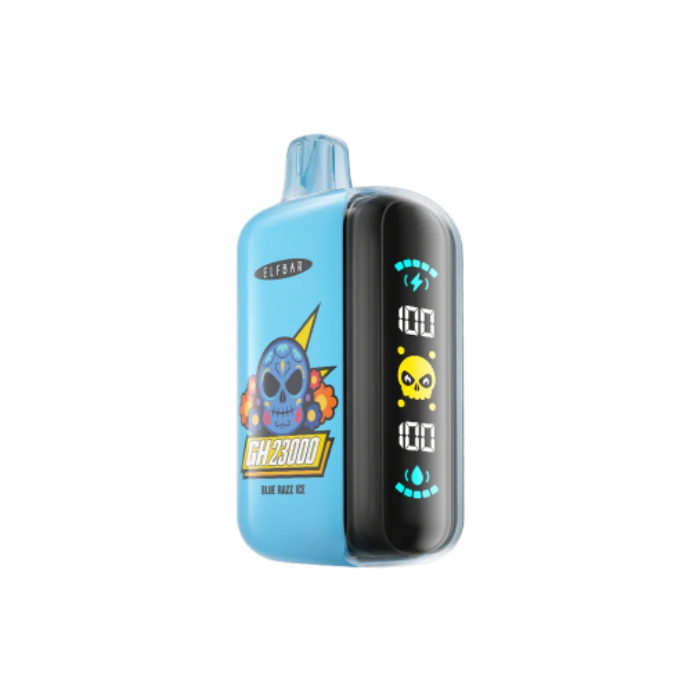Cigarettes, Guides
Do Smoke Detectors Detect Cigarettes?
Now you’re probably wondering—can smoke detectors actually pick up on cigarette smoke? Like, are they just built to sniff out raging infernos, or do they have a grudge against your post-dinner smoke break? Like, can you just imagine the smoke alarm blaring like it’s announcing the end times, and suddenly you’re standing there, shirtless, ash on your sock, trying to explain to your friend why the fire department is now part of the afterparty. Strap in, because we’re diving deep into this one, and trust me, it’s a bit more complicated (and funnier) than you’d think.
Understanding Cigarette Smoke Detection
Smoke detectors are, by design, party crashers. Their job is to ruin the vibe whenever there’s a hint of trouble in the air—literally. But their main gig is sniffing out fires, not policing your nicotine indulgence. So, the big question is: does the scent trail from your cigarette actually trip the alarm, or is that just urban legend wrapped in paranoia?
Cigarette smoke isn’t as thick or hot as the billows from a kitchen fire or an electrical blaze. It’s more of a slow, moody fog than an angry inferno. So, when you light up a cigarette indoors, it usually doesn’t set off most alarms right away—unless you’re puffing like a chimney in a closet-sized space.
The trick here is in the type of detector. Some are hyper-sensitive little divas. Others are more laid-back, like that one friend who sleeps through earthquakes. Let’s talk about the nitty-gritty of how they work.
What is Cigarette Smoke Detection?
Let’s break this down. Cigarette smoke detection isn’t just about catching someone having a sneaky puff. It’s about identifying airborne particles that match what the detector’s been programmed to get cranky about.
Cigarette smoke floats around as a fine mist of particles. It’s got a bit of everything—carbon monoxide, tar, nicotine, and a swirl of other delightful chemicals that hang in the air like unwanted guests.
Some smoke detectors are built to pick up on this kind of subtle, low-key smoke. These are usually found in places like hotels, rental units, or buildings where someone’s tired of chasing tenants who think a balcony doesn’t count as “indoors.”
So yes, some detectors do catch cigarette smoke. But it’s not about the scent—it’s all about particle size, density, and how annoyed the detector is feeling that day.
Importance of Detecting Cigarette Smoke in Rentals
When tenants light up inside, even just a few times, it starts a chain reaction. Smoke particles don’t just float around for a few minutes and vanish—they embed themselves in upholstery, drywall, and even the HVAC system. And once that happens, you’re not just airing out the place for a day or two. You’re looking at weeks of deep cleaning, deodorizing treatments, and sometimes full-blown renovation.
This is exactly why more landlords are installing cigarette smoke detectors. Not the basic ones that cry wolf every time you make toast, but legit cigarette smoke sensors built to detect smoking incidents quickly and accurately. These sensors aren’t playing around. Some are hooked into toxic gas detection systems that can actually analyze the chemical makeup of the air and detect smoking activity based on more than just visuals.
It’s wild what these things can do now. Some cigarette smoke sensors work by monitoring the density and size of smoke particles in the air—pinpointing when someone’s lighting up, even if they’re doing it “stealthily” beside an open window with a towel shoved under the door.
And don’t even get me started on cigarette butts. They’re like breadcrumbs from a guilty smoker—stuffed in planters, tossed behind furniture, hidden in vents. Not only are they gross, they’re also a potential fire hazard. Which means detect smoking technology isn’t just about catching someone breaking the lease; it’s about preventing serious property damage.
Now, can cigarette smoke set off these advanced detectors? Absolutely. These devices are made to zero in on even the faintest whiff of tobacco, catching what old-school alarms might miss. In high-density apartments or multi-unit buildings, they’re basically your best friend—quietly policing the air and keeping your smoke free environment truly clean.
Types of Smoke Detectors
Traditional Smoke Detectors
These are your classic, no-nonsense detectors—the kind that shriek when you slightly overcook a grilled cheese. Most of these fall into two main camps: ionization and photoelectric.
Ionization detectors are great at picking up flaming fires. They’ve got this little radioactive element inside (yeah, seriously) that helps them catch fast-moving smoke particles. But they’re kind of hit-or-miss with slow, smoldery stuff—like cigarette smoke.
Photoelectric detectors use a light beam. When smoke particles cross the beam, the detector freaks out. These are a bit better with slower fires and can be more sensitive to the type of particles you get from cigarettes, especially in closed rooms.
That said, traditional smoke detectors don’t specialize in catching cigarettes. They’re tuned more for life-threatening stuff. Which means you might be able to sneak a puff or two without triggering them—but don’t take that as a challenge.
Cigarette Smoke Detectors
Now this is where things get spicy. Cigarette smoke detectors are like regular detectors’ nosy cousins. They’re purpose-built to detect the exact kind of smoke you’d get from a dart, vape, or cigar.
They don’t just rely on visual cues. Some of these use sensors that sniff for specific chemicals like nicotine or carbon monoxide in low amounts. They’re often used in hotels, schools, airplanes, and yes—rental properties where smoking indoors is a no-go.
These detectors can be stealthy. Some are hidden in ceiling vents or disguised as light fixtures. So, if you’re thinking, “Oh, I don’t see a smoke detector, I’m good,”—you might want to think again.
They’re designed to be more accurate with low-density smoke, which means even a single puff could set them off. And unlike traditional detectors that just make a fuss and shut up, these ones often notify someone. Like the front desk. Or your landlord. Or worse—your boss.
So if you’re lighting up indoors and you’re not 100% sure what kind of detectors are watching you, you’re playing a dangerous game of smoky roulette.
How Smoke Detectors Work
Most folks think these devices are just glorified noisemakers that overreact to burnt toast—and to be fair, sometimes they are. But under that basic shell is a surprisingly clever system that’s constantly sniffing the air, on the lookout for changes most people wouldn’t notice unless their curtains were on fire.
At their core, smoke detectors work by noticing tiny particles floating around—specifically, smoke particles. But not all detectors are equal, and how they interpret those particles can make the difference between catching a life-threatening fire early or just screaming because someone microwaved a burrito too long.
Basic Principles of Smoke Detection
There are two main types of traditional smoke detectors. The first one is the ionization type. It’s kind of like having a guard dog with a twitchy nose. Inside, it uses a small amount of radioactive material (don’t worry, it won’t turn your kitchen into Chernobyl) that creates a flow of ions between two plates. When smoke particles get into the mix, they mess with that ion flow—boom, alarm goes off. These are good for detecting fast, flaming fires, the kind that leap out of nowhere and turn the stove into a bonfire in seconds.
Then we’ve got photoelectric detectors. These are more of the observant type—the ones who notice something’s off before anyone else. They use a light beam inside a sensing chamber. When smoke floats in, it scatters the light, and the sensor picks up on that shift. These ones are better for slow, smoldering fires—the kind cigarette smoke can resemble under the right (or wrong) conditions.
The science sounds neat, but here’s the twist: while these detectors are solid at catching what they were designed for, cigarette smoke is an oddball. It’s thinner, it’s cooler, and it doesn’t exactly barge in—it sort of…slinks. Which brings us to the limitations.
Limitations of Traditional Smoke Detectors
Now, here’s where reality steps in and says, “Calm down.” Traditional smoke detectors are decent, but they’re not detectives. They don’t have brains, just triggers. So, unless there’s a high enough concentration of smoke particles, they might just sit there and let your cigarette break slide.
This is why someone can smoke indoors and not get caught right away—especially if the room’s big, or there’s decent ventilation. Traditional detectors aren’t built to detect smoking specifically; they’re tuned for emergencies, not misdemeanours.
Also, there’s the fun part where these detectors can be too sensitive in all the wrong ways. Steam from your shower? Sure, that might set them off. But one sly puff of a cigarette? Sometimes that slips by unnoticed. It’s like having a guard dog that only barks at squirrels but sleeps through a burglary.
That’s why you need something more specialized if you’re serious about enforcing a smoke free environment. Because the old-school stuff just isn’t built to handle sneaky smokers and their trail of invisible cigarette butts.
Detecting Cigarette Smoke
The truth is, detecting cigarette smoke isn’t always as straightforward as it sounds. Cigarette smoke doesn’t burst into a room like a burglar—it eases in slowly, settles into the drywall, clings to fabric, and leaves behind a calling card: smoke stains. You might not catch someone red-handed with a lit cigarette, but those pale brown smudges along the ceiling edges? Yeah, that’s the ghost of Marlboros past.
This is where modern tools come into play. Today’s advanced smoke detectors are nothing like the old models that beeped every time you made perogies. These bad boys are built with air quality sensors that actually analyze the air for specific pollutants found in tobacco smoke. They can differentiate between steam, burnt toast, and a slow, steady stream of cigarette emissions. Basically, they’re detectives that don’t need witnesses—they’ve got lab results.
These detectors are often part of a broader smoking detection system, one that’s constantly monitoring particle density, air composition, and sudden changes in chemical signatures. It’s like CSI, but for the air. Some even connect to Wi-Fi, sending alerts in real-time when indoor smoking is detected, so you don’t find out weeks later when the walls start yellowing and the smoke free signage becomes more ironic than informative.
Because the problem with cigarette smoke is that it doesn’t stay in one spot. It drifts, it seeps, and it stains—physically and financially. Once those smoke stains show up, it’s a full paint job, not a quick wipe. You want to stop the damage before it starts—and the only way to do that is by catching the act while it’s still invisible.
So, if you’re serious about keeping your property genuinely smoke free, don’t wait until the smell settles in and the walls start aging like antique parchment. Equip your building with real-time smoking detection systems, get those air quality sensors in place, and for the love of drywall, stop relying on your nose alone. Technology’s got your back now—you just need to install it.
Can Smoke Detectors Detect Cigarette Smoke from Another Room?
If the rooms are well-sealed, have closed doors, and maybe a towel jammed in the crack (you know, the classic move), cigarette smoke might not travel far enough, or in high enough concentration, to set anything off.
But—and this is key—smoke particles are persistent. They move through vents. They creep under doors. They don’t care about your privacy. If there’s airflow between rooms, or you’re lighting up repeatedly, it builds up. Eventually, the smoke reaches the detector’s sensitive little nostrils, and suddenly it’s showtime.
Cigarette smoke detectors designed to detect smoking specifically? Those are even more capable. Depending on placement and airflow, they can absolutely pick up smoke from another room. Especially if it’s a connected space like a hallway or an open concept setup.
Factors Affecting Smoke Detection
Let’s talk variables, because smoke detection isn’t a one-size-fits-all kind of deal. A lot can impact whether or not cigarette smoke is detected.
Room size is huge. Larger rooms give smoke particles more room to disperse, meaning lower concentrations and slower detection. Smaller rooms? It’s like hotboxing a phone booth—detection happens faster.
Ventilation also plays a big role. Open windows, fans, air purifiers—they all mess with how smoke moves. Some systems can carry smoke further than you think, while others might dilute it enough to sneak under the radar.
The type of detector matters too, big time. A basic ionization detector might ignore light cigarette smoke. But cigarette smoke sensors? These little snitches are tuned to pick up the tiniest whisper of tobacco in the air. They’re trained to detect smoking and can trigger alerts without needing the whole room to be fogged up.
Preventing False Alarms
False alarms aren’t just annoying—they’re reputation killers for detectors. If your smoke detector cries wolf too many times, people stop taking it seriously. And the last thing you want is someone unplugging the thing just so they can enjoy a grilled cheese in peace.
The irony? Most false alarms aren’t because of some massive design flaw—they’re just poor placement, outdated equipment, or someone who insists on frying bacon at 700°F under a low ceiling. If you’re running a rental property or managing any kind of smoke free building, this kind of chaos isn’t just irritating—it undermines your whole setup.
Smart buildings need smart systems. That means installing the right kind of detectors in the right spots—not directly over stoves or steamy bathrooms, and definitely not too close to that one guy who uses incense like it’s his full-time job.
Common Causes of False Alarms
Now, let’s get into the hall-of-fame reasons why smoke detectors go off like they’re auditioning for a horror movie:
- Cooking mishaps. It’s always the kitchen. Someone broils garlic bread for too long or decides now is the perfect time to sear salmon with all the windows shut. The detector freaks out, and suddenly the fire department’s knocking. Again.
- Steam. Steam’s the sneak thief of the false alarm world. It looks like smoke, it moves like smoke, but it’s just a hot shower or boiling pasta. Unfortunately, traditional detectors can’t always tell the difference.
- Dust and debris. You’d be surprised how many alarms get tripped by a dusty sensor. It’s like trying to read a room through dirty glasses—eventually, you’re gonna make a bad call.
- Insects. Yep. Tiny bugs sometimes crawl into detectors and mess with the internal sensors. It’s gross, and it’s real. You’ve got to love how nature finds a way to ruin everything.
- Low battery chirps. Okay, technically not a false alarm, but if you’ve ever woken up to that “chirp” every 45 seconds at 2 AM, you know it deserves a mention.
Tips for Minimizing False Alarms
Here’s where we roll up our sleeves and actually fix the problem. If you’re serious about maintaining a smoke free building and want your system to be respected there are a few key moves you should be making.
Proper placement is everything. Avoid putting detectors too close to cooking appliances, steamy bathrooms, or anywhere with frequent dust. Aim for a sweet spot—central enough to catch problems but not so close that they get triggered by toast.
Upgrade to smarter tech. Modern air quality sensors and advanced smoke detectors can actually distinguish between different particles. Steam won’t fool them. Bacon grease? Maybe, but it’ll take more effort.
Clean the units regularly. Just like anything else in a home, detectors gather dust. A quick vacuum around the vent area once every few months can prevent a lot of nonsense.
Use heat detectors in high-risk areas. In kitchens especially, heat detectors are less prone to false alarms from smoke or steam and focus instead on sudden temperature changes.
Tell your tenants how the system works. Sounds basic, but it goes a long way. If people know what’s going to trigger the detector, they’re less likely to do the dumb thing that triggers it.
Legal Considerations
If your lease clearly states that indoor smoking isn’t allowed—and it’s supported by local bylaws or condo rules—then that lease becomes your shield. The law’s on your side. But, and this is crucial, you’ve got to back up those rules with actual enforcement tools. That’s where installing smoke detectors that are made to detect smoking becomes more than just smart—it becomes necessary.
Eviction Due to Smoking Violations
Eviction isn’t a card you pull just because your tenant lit one cigarette by the window two weeks ago. But if the smoking incidents are chronic, and you’ve got the receipts? Then yeah, it’s go time.
Repeated indoor smoking, especially when it violates a signed lease, puts other tenants at risk and damages the property. You can’t enforce a smoke free policy without consequences. And while eviction isn’t fun for anyone, it’s sometimes necessary to maintain the health and integrity of the building.
What’s the secret to making it stick? Documentation. You want to be able to show when the smoking happened, how it was detected (cue your smoking detection system logs), and what steps you took to warn or correct the behaviour.
Frequently Asked Questions
Will a cigarette set off a smoke detector?
It depends on a few key things: how sensitive the detector is, how close you are to it, and what type of detector we’re talking about. Most traditional smoke detectors are tuned for dense smoke from things like fires or burnt food—not the thinner, slower-moving smoke from a single cigarette.
Is there a smoke detector that detects cigarette smoke?
There are specific cigarette smoke sensors and air quality sensors designed to sniff out tobacco smoke, even when it’s subtle. These detectors don’t rely solely on thick smoke clouds—they can track smaller smoke particles, chemical traces, and even the lingering stuff that regular alarms miss.
Can you test for cigarette smoke in a house?
You don’t need to be a smoke sommelier to tell when a place has been used as a secret smoking lounge. There are professional-grade tests that can analyze surfaces, vents, and even the air for signs of smoke stains and nicotine residue.
Do hotel smoke detectors detect cigarettes?
Most hotels use a mix of traditional smoke detectors and specialized systems that are extra sensitive to indoor smoking. Some even go full spy-mode with smoking detection systems that link up to the front desk and notify staff the moment cigarette particles start floating around.
Summary
Do smoke detectors detect cigarette smoke? Yeah, some do. Not all, not always, but enough that it’s not worth testing your luck. Traditional smoke detectors can catch cigarette smoke in high enough concentrations, especially in smaller or poorly ventilated spaces. But those specially designed cigarette smoke detectors? They’re like bloodhounds for nicotine—they will sniff you out.
Now, speaking of cigarettes—if you’re the kind of person who enjoys a good puff now and then, you might as well do it right. You want the real deal, not some off-brand nonsense wrapped in lies. So if you’re after classic cigarettes, cigars, smooth nicotine pouches, or even vapes that don’t taste like burnt cotton—go with NativeSmokes4Less. We’re legit, we’re proud, and we don’t mess with fake Zyn or sketchy knockoffs. You deserve quality. Period.






















